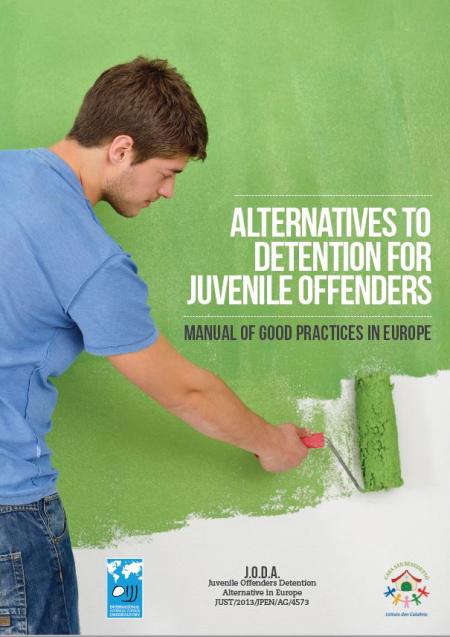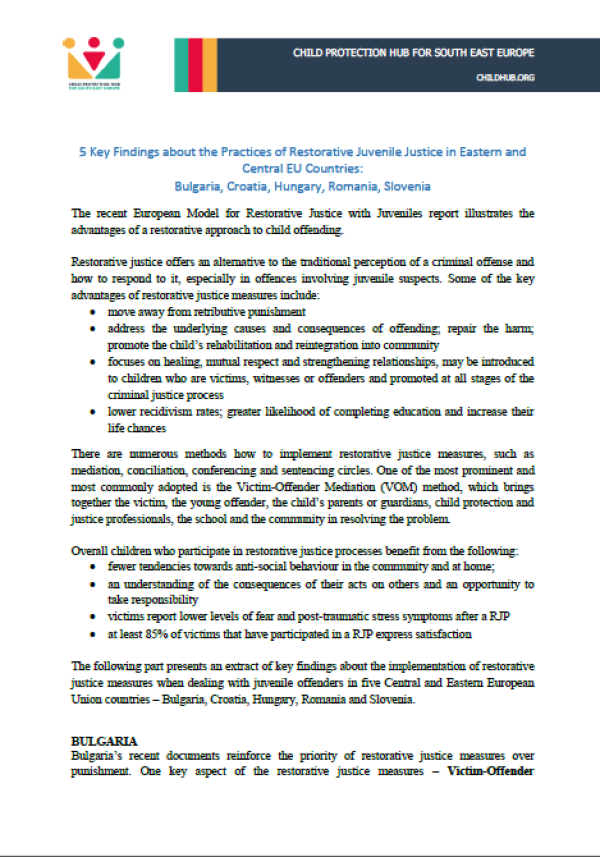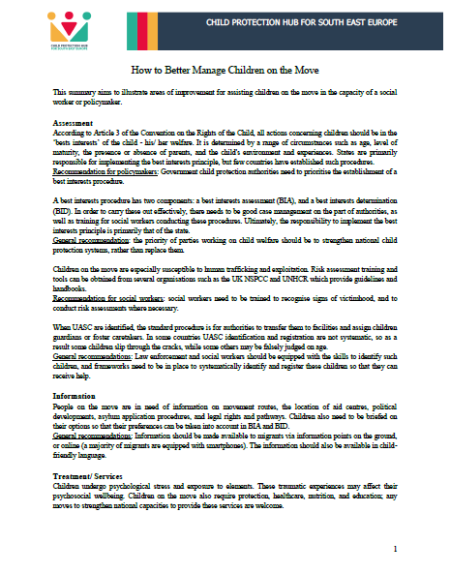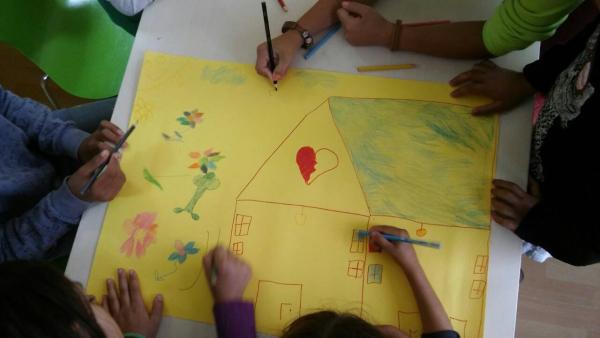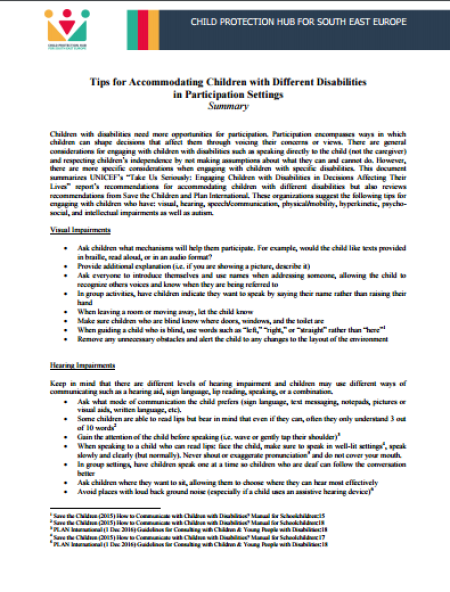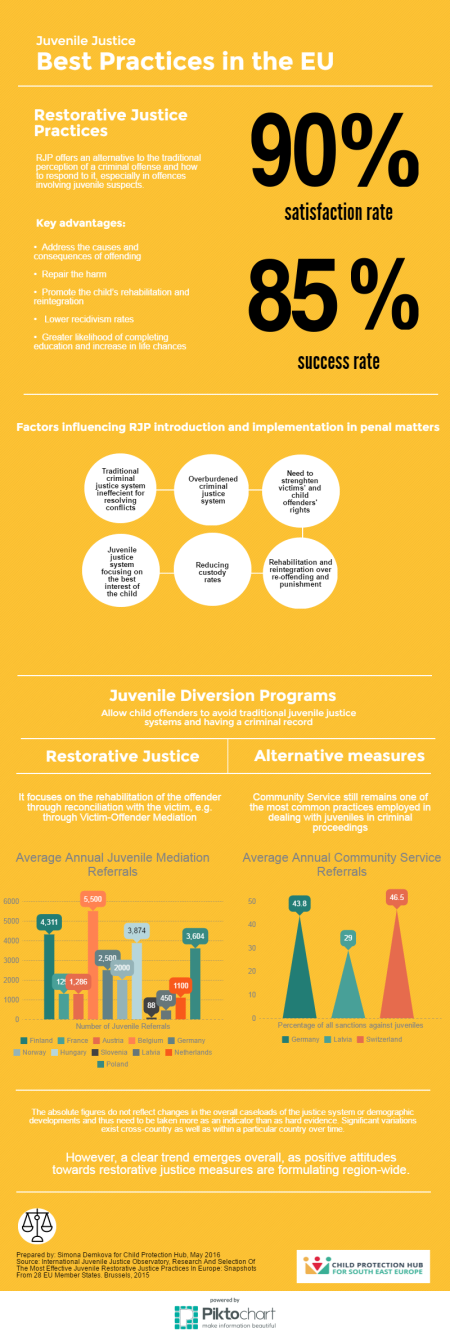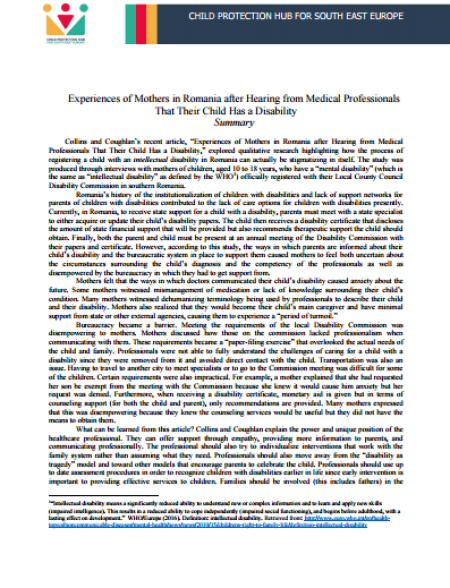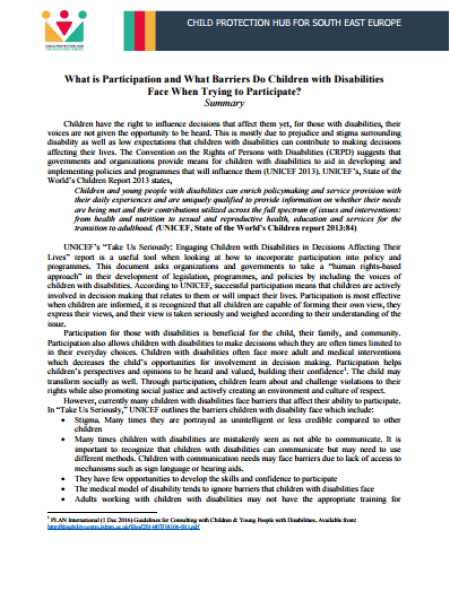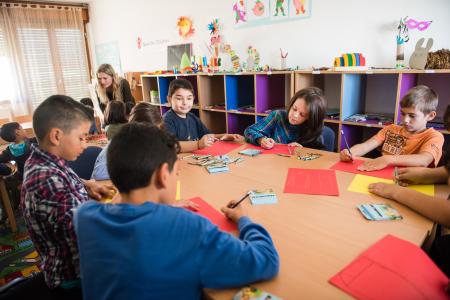
The following excerpt from the recent report published by the International Juvenile Justice Observatory summarises the key findings about alternatives to detention for juvenile offenders and their key benefits for the parties involved in the procedures. The categorisation utilised within is non-exhaustive, and other types can be used, however, these measures include some of the most common examples.
The examples include:
- Probation, community service and the imposition of fines
Benefits
- can help ensure that there is a level of accountability of the young person, through requiring some element of community service.
- allows the young person the opportunity to repair some of the damage to the community caused by his or her offending
- If this type of task also involves a benefit to the victim of the offending, it can also be said to incorporate a restorative element
- they are implemented within the young offender’s own community, thus providing an opportunity to the young person for rehabilitation and reintegration
- Educational measures and mentoring
Benefits:
- can be delivered either while the young person remains in his or her community, or while the young person is placed in an educational home, foster placement, or other situation
- often involve working closely with the young person’s family, as well as with the young person him or herself
- aftercare support services are also often in place if the young person is in an out-of-home placement, in order to assist them in transition back into their family and community situation
- allow for specific interventions to be targeted at particular problem behaviours, and allow for the social and psychological development of the young person
- strongly endorsed by the international
- Care-based and therapeutic measures
Benefits:
- allow for the incorporation of such measures into different legal frameworks and different legal and social contexts;
- possible to deliver a care-based intervention either while the young person remains in his or her family environment or while the child is cohabiting with another person, family or group
- particularly beneficial if it is considered that the family environment is contributing to the offending behaviour
- can be used to target specific problem behaviours, or particularly problematic groups of young people, including those who are considered to be at high risk
- to be used for young people who may not otherwise benefit from the use of alternatives
- the specific targeting of programmes at particular types of problem behaviour can allow the causes of offending behaviour to be directly addressed
- provides a mechanism for psychological techniques such as cognitive behavioural therapy to be incorporated into interventions
- the indications of positive effects on young people
- Restorative Approaches
Benefits:
- allow a final opportunity for the young person to avoid detention on remand
- allow a judge an important alternative and an avenue to avoid detaining the young person, wherever possible
- that very different approaches are possible to address this common problem
- provide a valuable opportunity to the young person to avoid detention at the pre-trial stage, where this would otherwise be considered necessary
The source:
Alternatives to Detention For Juvenile Offenders. Manual of Good Practices in Europe


